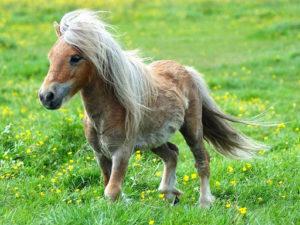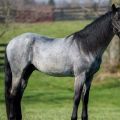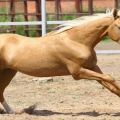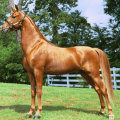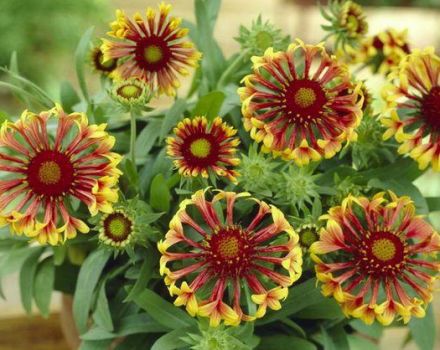In what breeds are horses of the Isabella suit found and the origin of the color
Keeping a horse of an isabella suit in a private stable confirms the impeccable taste, the wealth of the owner, and gives him significance. Animals with excellent pedigree are graceful, intelligent and willful. Legends were written about the endurance and devotion of the horses to the owner. For 5 centuries of existence, horses not only did not change outwardly, but also passed on their genes to other breeds.
A bit of history
On the territory of Akhal-Teke, one of the oases of modern Turkmenistan, in the 16th century, breeding work began on the breeding of Akhal-Teke. Unlike other riding breeds, the Akhalket horses stood out for their graceful lines, fit, and slenderness. They also became the first carriers of the unique Isabella suit. For 500 centuries, the Turkmen kept light horses in the household, providing them with food, care, and comfortable living conditions.
Akhal-Teke owners took care of maintaining the purity of the genotype, not allowing strangers to reproduce. They tamed the obstinate disposition, developing obedience, used for movement and protection from enemies. Now sophisticated, elegant horses of the Isabella suit are considered the standard of the exterior. Americans call this color cremello, or cream. Animals with wool of this color are genetically red horses.
The preservation of the purity of the genotype of the Isabella horses for centuries has become possible due to the isolation of the territory, the attitude of the local population to horses as to members of their families.
origin of name
The popularity of the horses of the Isabella suit came during the reign of the Netherlands by Queen Isabella Clara Eugenia. According to legend, the young royal lady promised herself not to take off her nightgown until the capture of the Belgian port of Ostend by King Albrecht of Austria.
It took 3 long years before the siege of the city was crowned with victory. During this time, the undershirt changed color from snow-white to cream. It is not known for certain whether these events are true or fictional, but since then the cream color of graceful horses has been called Isabella.
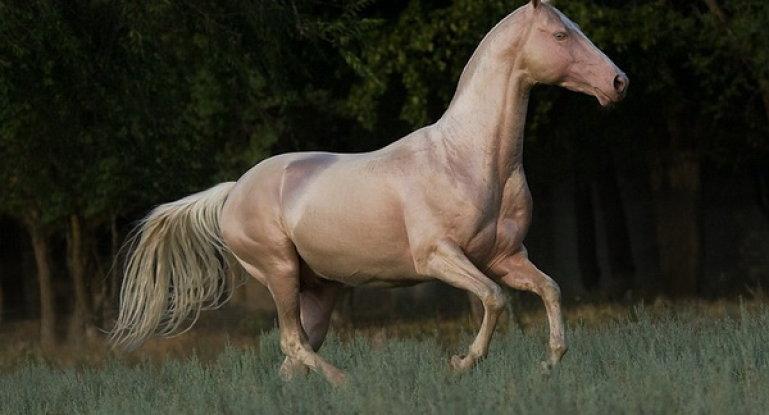
Appearance
If the skin of most colors is gray, in Isabella horses it is pale pink, without pigmentation. Other exterior signs:
- stallion height - 160-165 cm, mares - 157-160;
- weight - up to 470 kg;
- eyes - pale blue, blue, sometimes green;
- ears - mobile, regular shape;
- wool - cream, white;
- neck - long, with a beautiful curve;
- legs - muscular, dry;
- a toned stomach, sloping croup;
- tail - of medium length, set low.
In natural light, a well-groomed isabella horse coat shines. Depending on the angle of refraction of the sun's rays and the time of day, the skin shimmers with silver, milky highlights, and at sunset acquires a pink glow. Let's say the color of the tail, mane is 2 tones darker than the main color.
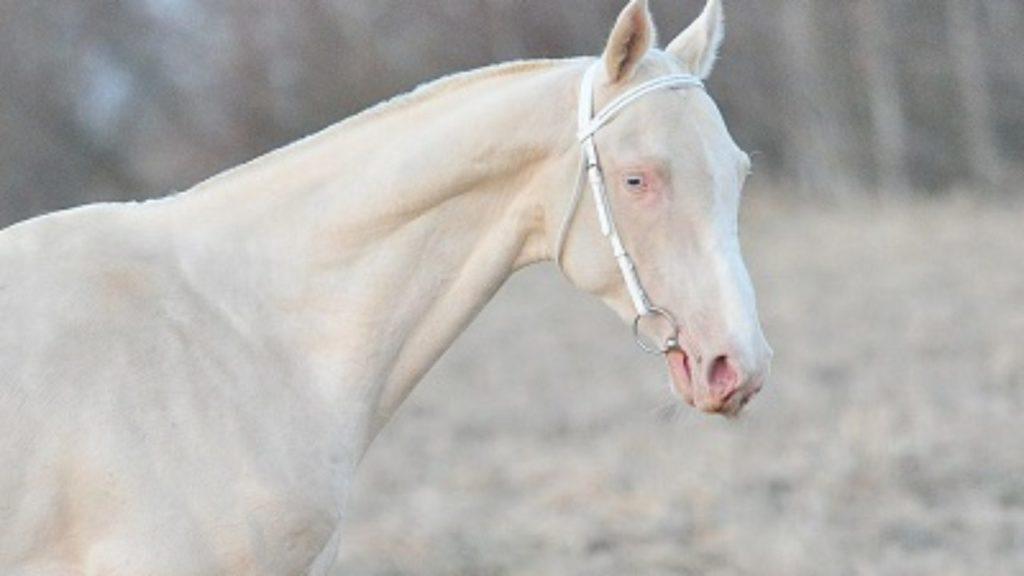
Isabella animals attract photographers, naturalists, and breeders. The latter do not always achieve results when crossing animals of light colors.
Features, disposition and behavior
Outwardly, a fragile, graceful horse has remarkable strength and willful character. Horses of the isabella suit do not take prizes in the races, as they are smart, careful and do not overcome obstacles if they are not confident in themselves.
Temperamental Akhal-Teke people love movement, catch the rider's mood, and do not allow strangers to approach them. Loyal and obedient to the owner, touchy with an inappropriate attitude towards themselves.
The horse's distrust creates a problem when changing owners. For the animal to recognize the owner in a stranger, they go a long and difficult way. Horses during training show obstinacy. If you don't want to follow the command, strength won't help, only love, affection and patience. Despite the external fragility and thin skin, horses of the isabella suit endure temperature extremes and are capable of carrying two well-equipped riders.
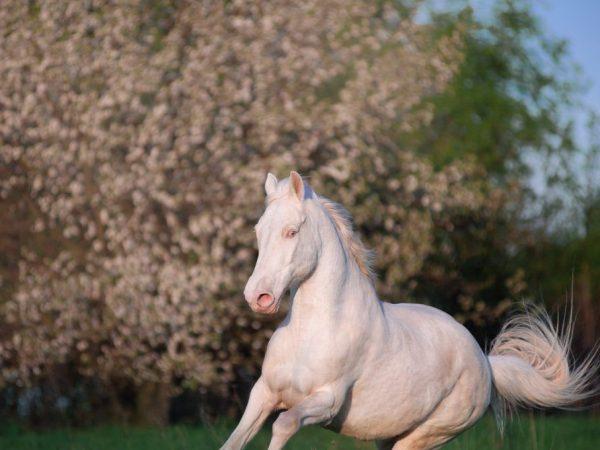
Breeds, among which isabella is found
Scientists have identified the Cream gene of isabella color, the mechanism of its manifestation, the formation of other colors. In the course of scientific research, it turned out that for the formation of a bay, black and red color, a combination of two genes is necessary - Extention, Agouti. If the dominant Cream is active, an isabella coloration is formed. To make this happen, they select a pair with exactly the same red genes. A cream colored foal is born from golden, dun and salty parents.
Due to the fact that inheritance occurs only in animals homozygous for the Cremello gene, there are few cream horses, although they are found among other breeds. Among the same Akhal-Teke horses, the isabella suit is formed in 2.5%. A DNA test is used to confirm the color.
Breeds with representatives of the kremmello suit, except for the Akhal-Teke:
- American cream. The only draft heavy draft trucks bred in America and surviving to this day. Application - agricultural work. White spots are allowed in the color. A characteristic feature is an amber iris of the eyes, pink skin.
- Kinsky. Czech tall (160-170 cm) breed of golden suit, known since the XII century, named after an ancient princely family that was engaged in horse breeding. Used for recreational and sport riding. The horses are distinguished by their good-natured disposition, agility, and jumping ability.
- Welsh pony. The small horse (120-137 cm), originally from the British Isles, has several colors, among which there is a light cream color. Used for horseback riding, sledding.
- Orlovskaya. The breed was bred by the Russian Count Alexei Orlov to solve the transport problem. Lightweight Oryol trotters are distinguished by their high speed, endurance, and resistance to adverse weather conditions. Today, horses are used for walks and sports.

Interesting Facts
Features of horses of the isabella suit:
- the shine of the coat is noticeable even in photographs without overlapping effects;
- horses are able to move along quicksand thanks to their unusual gaits;
- the animal is hurt by indifference, neglect of the owner;
- the cream Akhal-Teke is an expensive and rare breed, whose price reaches 1-2 million dollars;
- in another way, horses are called cream - according to the color of the coat;
- the smooth movements of the animal are not tiring for the rider;
- thin skin, thin hair do not interfere with the tolerance of the Isabella horse from -30 to +50 ° C.

